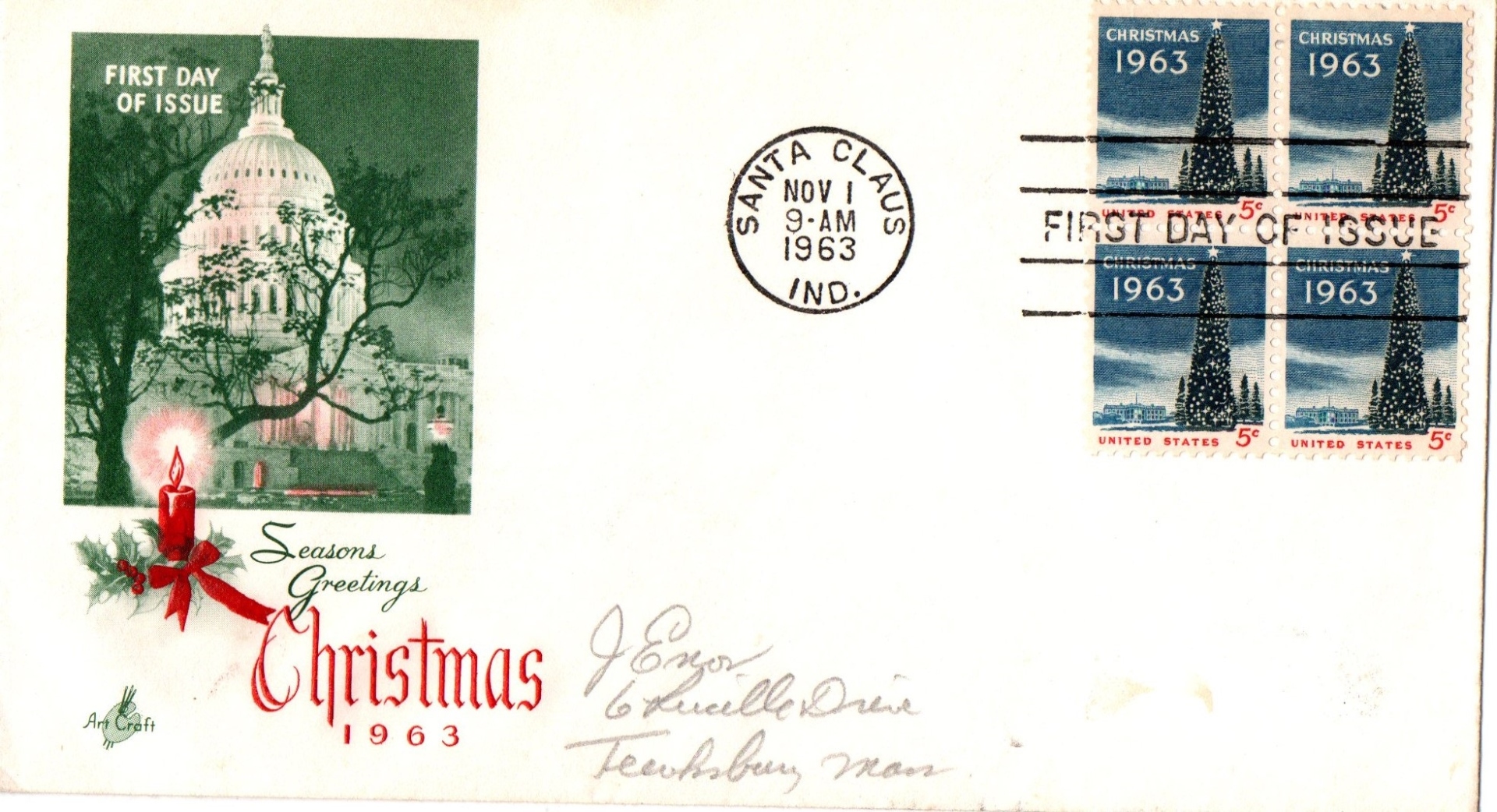
The stamps featuring National Christmas Tree from 1963.
Christmas, celebrated on December 25, commemorates the birth of Jesus Christ. It is a global festival celebrated by billions as both a religious and cultural event. Among the many traditions of this season are special Christmas-themed postage stamps.
Christmas stamps feature seasonal themes ranging from religious motifs like the Nativity to secular images such as Santa Claus and Christmas trees. Issued globally, these stamps are valid year-round but are released between October and December to meet the demand for holiday mail.
The choice of designs can spark debates. Religious leaders sometimes argue that secular images dilute the meaning of Christmas, while postal authorities worry that explicitly religious themes might alienate non-Christian customers or violate regulations. In the United States, this debate led to the issuance of both secular and religious stamps annually. Religious designs often adapt Old Master paintings, depicting these works as art rather than promoting religion.
The United States Postal Service (USPS) introduced Christmas stamps in 1962. Since 1970, it has released one traditional and one contemporary design each year. Traditional stamps often feature religious artwork, while contemporary stamps showcase secular themes like snowmen, Christmas trees, and Santa Claus. Many traditional designs are inspired by art from the National Gallery of Art in Washington, D.C.
For collectors, Christmas stamps offer unique opportunities. Though the stamps are widely available and affordable, the challenge lies in obtaining First Day Covers (FDCs) with special cancellations from locations like North Pole, Alaska, or Bethlehem, Pennsylvania.
Highlights of US Christmas Stamps
1963: The first U.S. Christmas stamp featured the National Christmas Tree with the White House in the background, released on 1 November with a Santa Claus cancellation from Indiana.
1964: Four se-tenant designs showcased holly, mistletoe, poinsettia, and conifer sprigs. These stamps came with a Bethlehem, Pennsylvania, cancellation.
1965: The first “traditional” stamp depicted the angel Gabriel, designed to be inclusive by referencing a figure common to multiple religious traditions.
1970: The Nativity was the focus, based on a sixteenth-century painting by Lorenzo Lotto. The photogravure printing method gave the stamp a smooth, blended look.
1972: Traditional and secular stamps included “Mary, Queen of Heaven,” and a Santa Claus design. The FDC featured Washington, D.C., cancellations.
1973: Raphael’s “The Small Cowper Madonna” inspired the traditional stamp, reflecting Renaissance artistic influences.
1974: The “Peace on Earth” stamp introduced self-adhesive stamps, featuring a dove weather vane atop Mount Vernon.
1976: The USPS released two stamps: a Nativity scene and a winter pastime illustration. The FDC had a Boston cancellation.
1979: Santa Claus stamps celebrated the legend with a North Pole cancellation.
1984: A Madonna and Child stamp, based on a Fra Filippo Lippi painting, emphasised the sacrificial symbolism of Christ.
1989: A stamp featuring “Madonna and Child” was inspired by Lodovico Carracci’s “The Dream of Saint Catherine of Alexandria,” reflecting the Italian Baroque style.
1992: A traditional stamp featured “Madonna and Child with Saints,” while a contemporary design showed a toy train. Both were released with thematic cancellations.
1995: Santa Claus-themed stamps depicted scenes of him entering a chimney and a child holding a jumping jack toy, paired with a North Pole cancellation.
Christmas stamps are a popular choice for philatelists. While widely available, collectors value unique FDCs with special cancellations from places like Santa Claus, Indiana, or Noel, Missouri. The stamps’ designs, blending religious and secular themes, encapsulate the spirit of the holiday season.
(The writer is the former president of Goa Philately and Numismatics Society)